Thrushes
Thrush is the common name for the bird family Turdidae. These birds are plump, soft plumaged, small to medium sized insectivores (sometimes omnivores) which often feed on the ground, and frequently have pleasant songs. Perhaps a half dozen or so members of this family can be seen around the Lake, but its most prominent and familiar member is the American Robin. It is fairly easy to distinguish male from female robins; the males have blackish heads and bright red breasts; the females have brownish heads and more muted breasts.
In the spring and summer, the Varied Thrush can be seen. Although closely related to the American Robin, it has a very different behaviour and song. Unlike the robin, it is quite shy and will hide in thickets rather than forage openly on lawns. It song is a slightly warbling monotone, which then gets repeated at a different pitch. Like the robin, males and females of the Varied Thrush are distinguishable with the heads of the males being blackish and that of the females being more brownish–grey.
Other thrushes seen in the area are the Townsend’s Solitaire and the Mountain Bluebird.
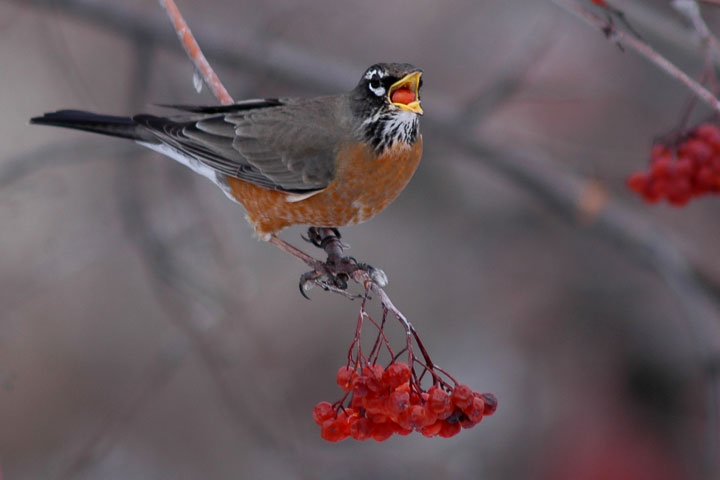 A male Robin scrounges berries from a mountain ash in February.
A male Robin scrounges berries from a mountain ash in February.  LVD.
LVD.
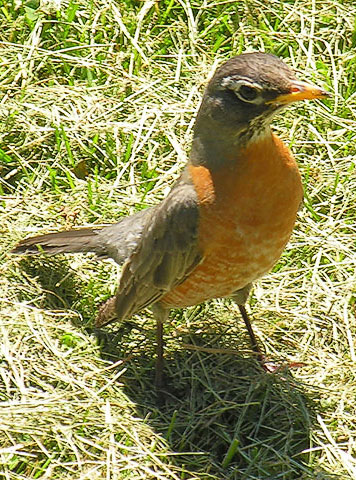 Robins are frequently seen running across lawns picking up earthworms. This food is typical of a thrushs: a mixture of insects, worms, and berries.
Robins are frequently seen running across lawns picking up earthworms. This food is typical of a thrushs: a mixture of insects, worms, and berries.
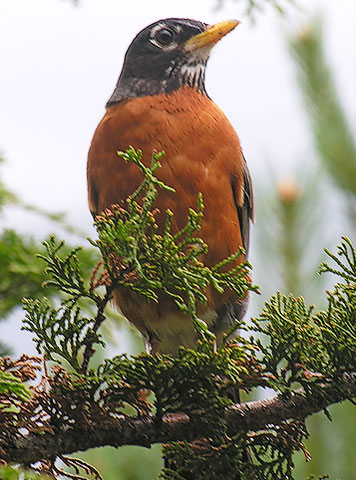 Robin, male. During the breeding season, the male has a black head and his breast is a brick red.
Robin, male. During the breeding season, the male has a black head and his breast is a brick red.
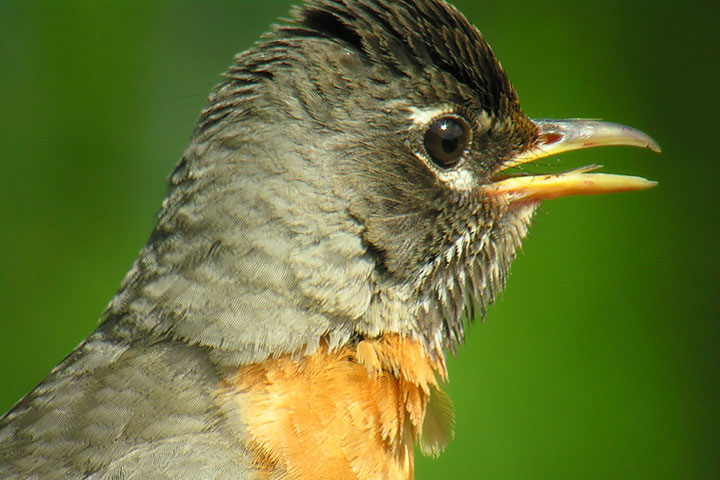 Robin, female. She left her nest in response to perceived danger, and is now awaiting the chance to return.
Robin, female. She left her nest in response to perceived danger, and is now awaiting the chance to return.
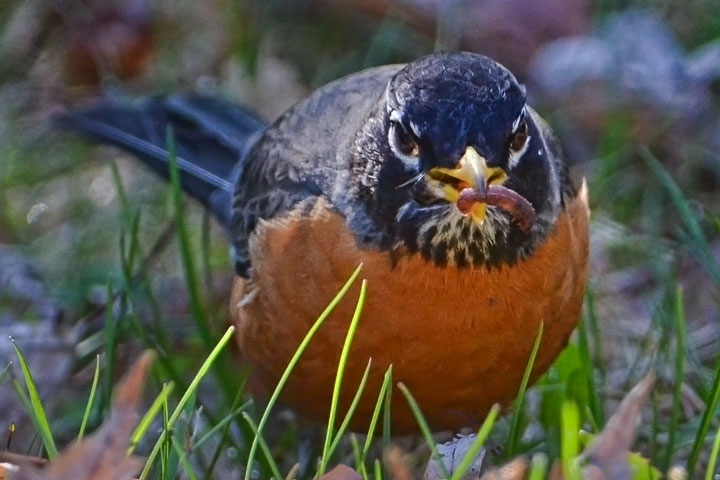 Robin and grub From the time a robin spots something to eat until it vanished down the gullet is under a second.
Robin and grub From the time a robin spots something to eat until it vanished down the gullet is under a second.
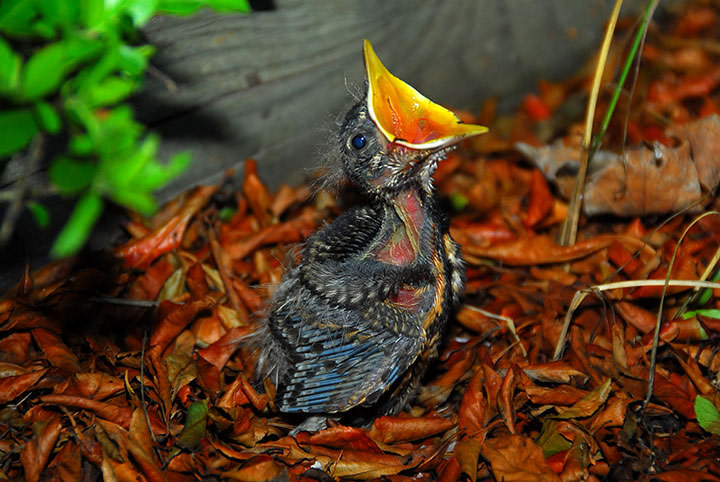 This few-day-old Robin chick is begging for food.
This few-day-old Robin chick is begging for food.
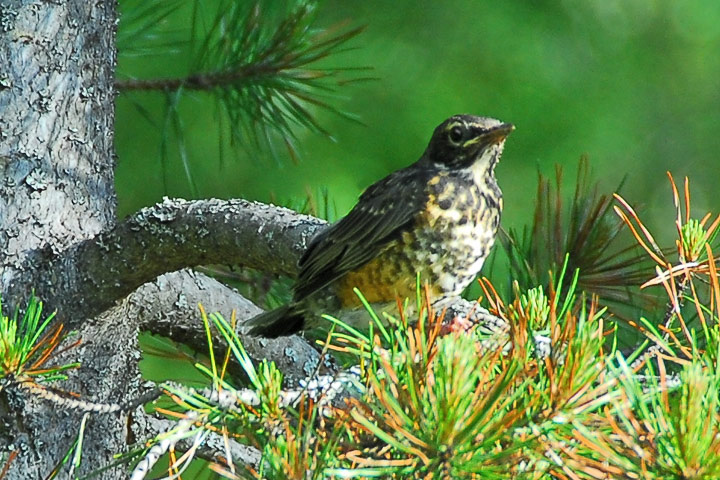 The freshly fledged Robin juvenile has a spotted breast which it will retain until September.
The freshly fledged Robin juvenile has a spotted breast which it will retain until September.
 The Townsend’s Solitaire, is a rather drab-looking thrush, with a prominent eye ring. As its name implies, it is usually seen alone (often perched on the tops of trees). It eats berries and insects.
The Townsend’s Solitaire, is a rather drab-looking thrush, with a prominent eye ring. As its name implies, it is usually seen alone (often perched on the tops of trees). It eats berries and insects.
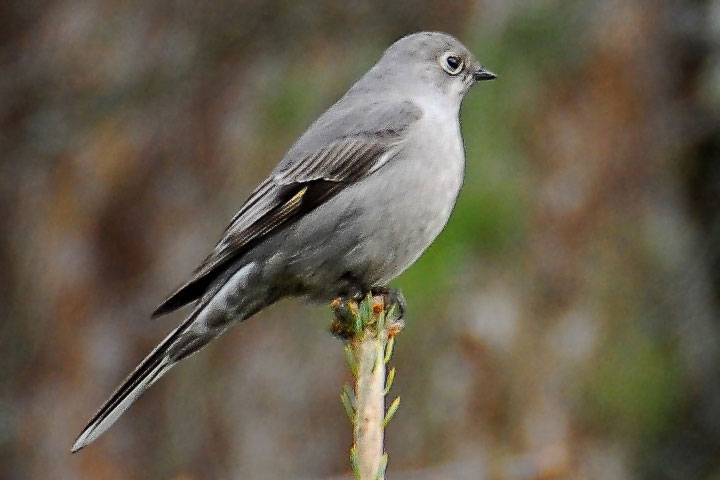 A Townsend’s Solitaire, perched on the top of a tree.
A Townsend’s Solitaire, perched on the top of a tree.
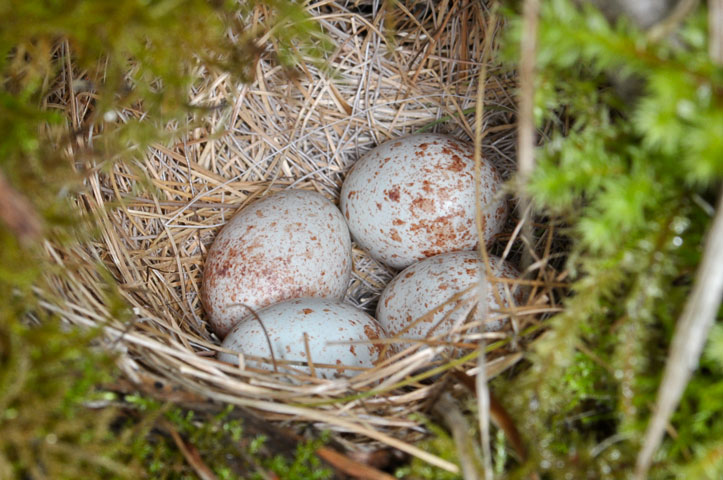 The eggs of a Townsend’s Solitaire are laid in an cavity in the side of a stream bed.
The eggs of a Townsend’s Solitaire are laid in an cavity in the side of a stream bed.
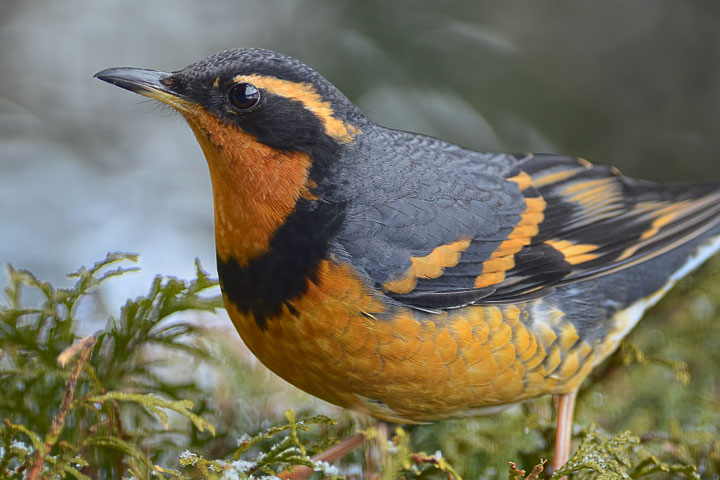 The Varied Thrush is an amazingly colourful bird. The bird is quite wary and so difficult to see closeup. The black on the head, wings, and beast band reveal this to be a male.
The Varied Thrush is an amazingly colourful bird. The bird is quite wary and so difficult to see closeup. The black on the head, wings, and beast band reveal this to be a male.
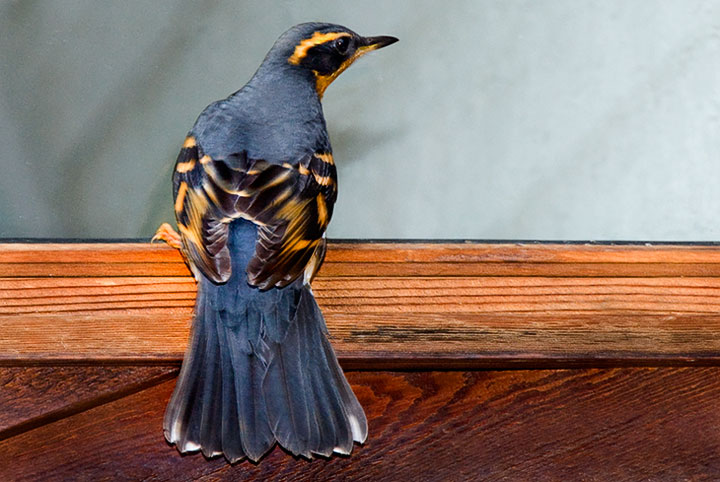 The alternation of black and orange on the wings and head of the Varied Thrush make this bird unmistakable.
The alternation of black and orange on the wings and head of the Varied Thrush make this bird unmistakable.
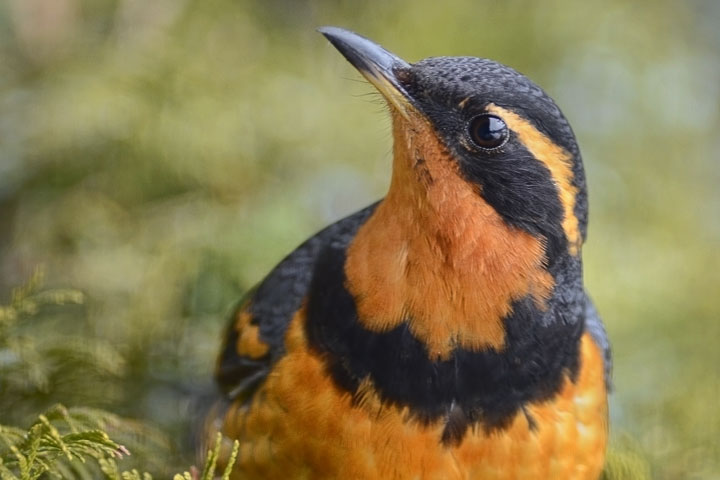 A male Varied Thrush.
A male Varied Thrush.
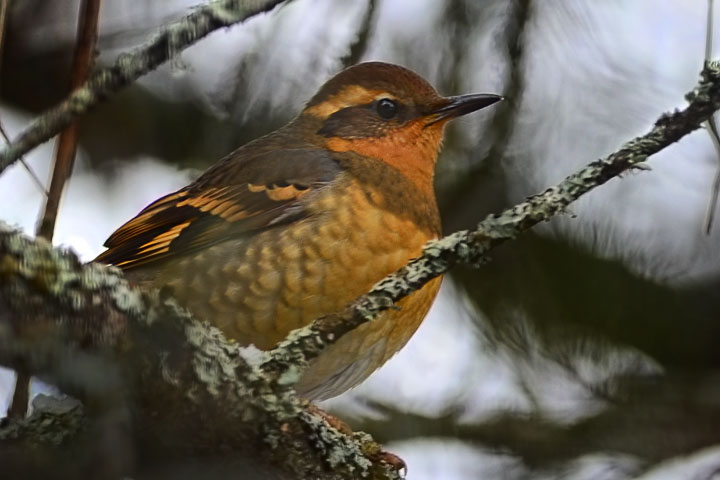 The female Varied Thrush is similar to the male, however, black on the head, wings and breast band is replaced by brownish grey. As is characteristic of the species, this bird is secreted in a thicket.
The female Varied Thrush is similar to the male, however, black on the head, wings and breast band is replaced by brownish grey. As is characteristic of the species, this bird is secreted in a thicket.
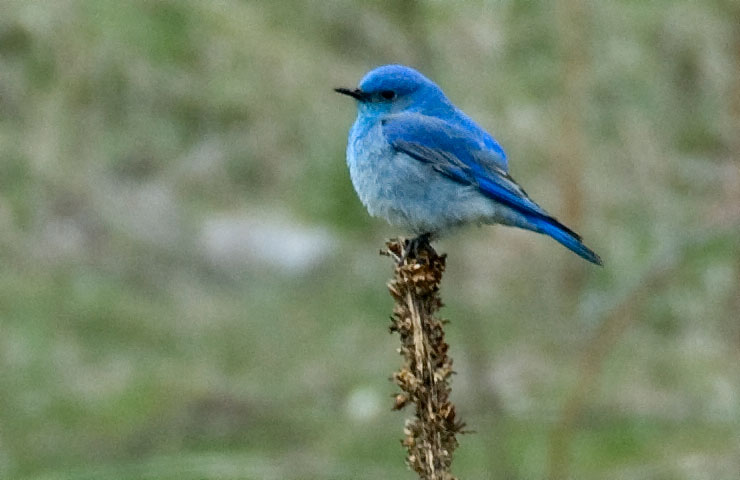 The Mountain Bluebird prefers clearings where it will sit on brush while watching for insects below. This is a male.
The Mountain Bluebird prefers clearings where it will sit on brush while watching for insects below. This is a male.
 The female Mountain Bluebird is not quite as blue, especially underneath.
The female Mountain Bluebird is not quite as blue, especially underneath.
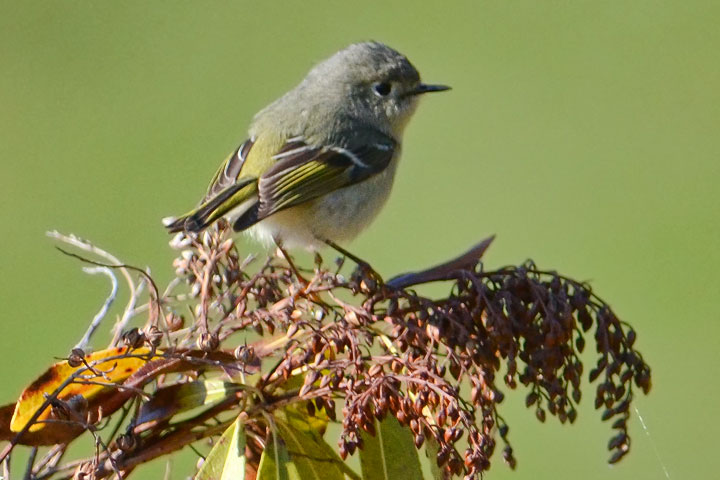 Although not a thrush, the Ruby–crowned Kinglet is related to them and so is place here. It is a member of the kinglet family. The males have a red crown patch, but it is usually concealed. The bird eats mainly insects, but some seeds.
Although not a thrush, the Ruby–crowned Kinglet is related to them and so is place here. It is a member of the kinglet family. The males have a red crown patch, but it is usually concealed. The bird eats mainly insects, but some seeds.
Information from Wikipedia:
Thrush,
American Robin,
Townsend’s Solitaire,
Varied Thrush,
Mountain Bluebird,
Ruby–crowned Kinglet.
![]()